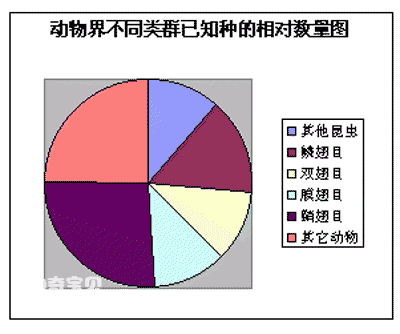Recent research shows that there may be 10 million species of insects in the world, accounting for about half of all biological species on the earth. However, there are currently only 1 million named insect species, accounting for 2/3-3/4 of the known species in the animal kingdom. It can be seen that we still do not know 90% of the insect species in the world; according to the most conservative estimate, there are at least 3 million species of insects in the world, and there are still 2 million species waiting for us to discover, describe and name them. Currently, about 1,000 new insect species are published in the world every year, and they are included in "Zoological Record". Therefore, this magazine is a must-have search tool for researchers engaged in animal classification.

Among the named insects, there are 350,000 species of Coleoptera (beetles), among which the Curculionidae is the largest, including more than 60,000 species, which is 10 times that of mammals. Lepidoptera (butterflies and moths) follows, with about 200,000 species. There are about 150,000 species of Hymenoptera (bees, ants) and Diptera (mosquitoes, flies). The figure below shows the relative number of known species in different groups in the animal kingdom.
Not only are there many types of insects, but there are also many individuals of the same insect, and some individuals have an astonishingly large number. An ant colony can contain up to 500,000 individuals. A tree can contain 100,000 aphids. In the forest, there can be 100,000 springtails per square meter. When locusts occur in large numbers, the number of individuals can reach 700 to 1.2 billion, with a total weight of about 1250 to 3000 tons. The area covered by swarms can reach 500 to 1200 hectares, which can be said to cover the sky and the sun.
[Tips] Nomenclature and type specimens of organisms: Scientists give each organism they have studied but not recorded a Latin scientific name, including the two Latin words of the genus name and the species name, which is called the binomial method, 1758 It was pioneered by Swedish scientist Linnaeus. The specimens on which the name is based are called type specimens, one of which is designated as the holotype and the others as paratypes.
animal tags: Coleoptera Curculionidae Lepidoptera Hymenoptera Diptera species
We created this article in conjunction with AI technology, then made sure it was fact-checked and edited by a Animals Top editor.